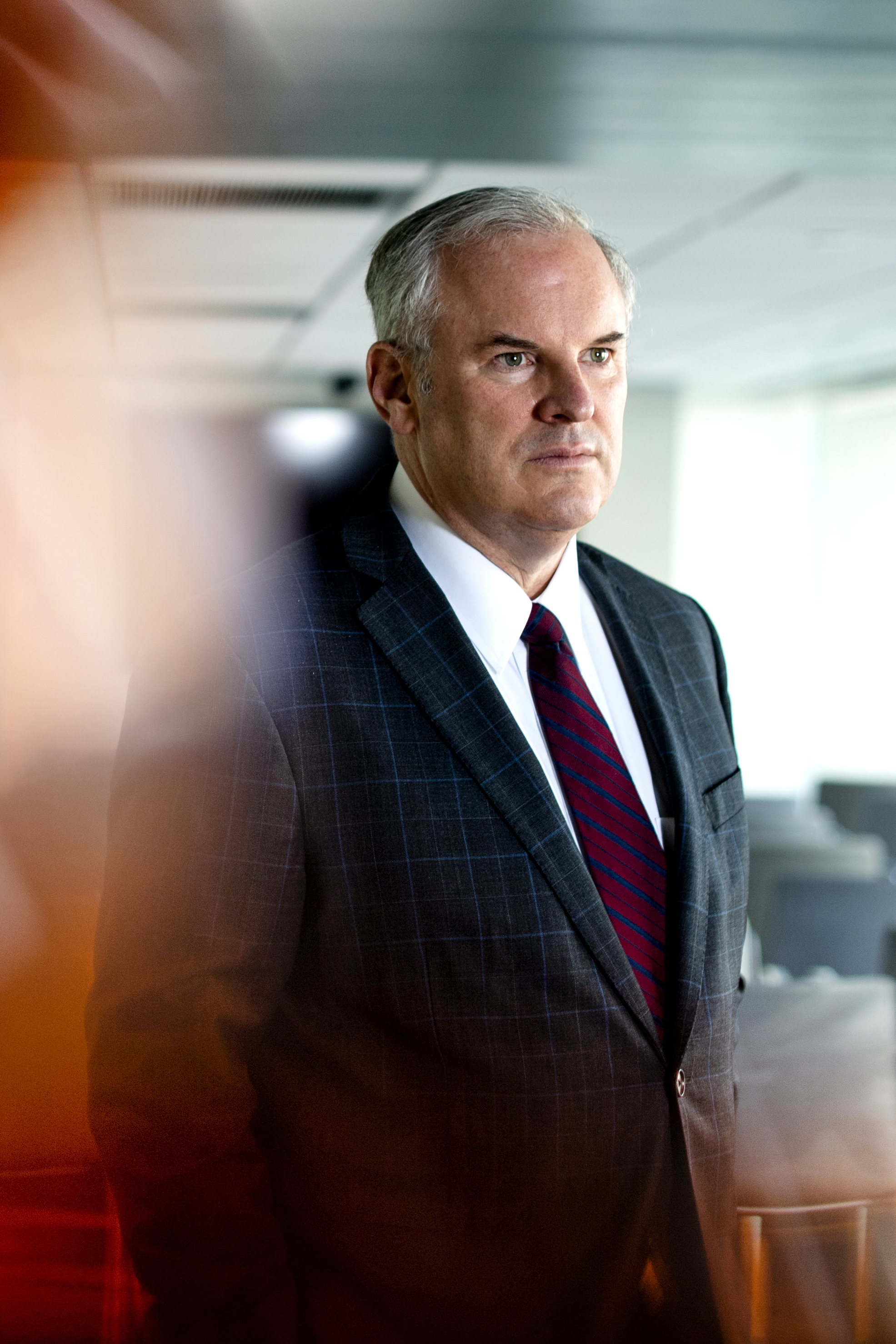Puerto Rico has weathered 500 earthquakes in two weeks. How does it rebuild?

In the past two weeks, Puerto Rico has weathered more than 500 earthquakes, and according to the U.S. Geological Survey, the shaking isn’t over yet.

Stephen Flynn is the founding director of the Global Resilience Institute. Photo by Matthew Modoono/Northeastern University
The largest two quakes, magnitude 5.8 and 6.7, struck within a 24-hour period earlier this week, killing one person, collapsing buildings, and knocking out power across the island. The quakes, which were centered just off the southwestern shore of the island, were the strongest to hit Puerto Rico in over a century.
“People are just sleeping outdoors,” says Stephen Flynn, the founding director of Northeastern’s Global Resilience Institute, who was in Puerto Rico this week to discuss ways to help the island bounce back from natural disasters. “They’re too nervous to go back into their homes.”
The island is still recovering from the devastation caused by Hurricane Maria in 2017, which killed close to 3,000 people and knocked out power for months. Flynn and other Northeastern faculty have been working with the humanitarian organization Oxfam and the Foundation for Puerto Rico, the island’s largest nonprofit, to develop a project to facilitate that recovery.
“We’re bringing in a combination of our expertise on what makes a resilient community, and also an awareness of both federal funding and potential private sector funding opportunities to invest in those,” says Flynn, who is a professor of political science. “If we can develop something together, some of these best practices in Puerto Rico, then we can share them with other islands as well.”
One of the major issues faced by Puerto Rico is electricity. Hurricane Maria knocked out many of the transmission and distribution lines in the island’s ageing power grid. It took almost a full year to restore power to every community, and the system remains fragile. The recent earthquakes severely damaged the Costa Sur power plant, which supplies more than a quarter of the island’s power. José Ortiz, the chief executive officer of Puerto Rico Electric Power Authority, said recently that the plant could be out of commission for up to a year.
“When that system fails, it fails very badly,” Flynn says. “If you have no power, you have no way for wells to work, so you have no water. You have no way to communicate. So you have these ripple effects.”
One solution, Flynn says, is to set up microgrids based on wind or solar energy. These could supply power to small communities that are cut off when the main power grid fails. Even a solution as simple as hooking a solar panel up to a well could guarantee that families have access to clean water in a disaster.
“It’s a more resilient system, because you’re not entirely dependent on the larger power apparatus,” Flynn says. “Many of the smaller villages can be entirely self sufficient, built around alternative energy sources.”
But helping a community bounce back is about more than just physical solutions such as a better power infrastructure or improved building designs.
“Many of the people’s houses in the south were fine for hurricane force winds, as severe as they were, but with the earthquake, they failed,” Flynn says. “We take an all-hazards approach. We look at the full range of risk, and ideally design in a way that’s able to withstand that risk. So if you get knocked down, you’re able to get back up quickly.”
Solutions need to be inclusive and equitable to be effective, Flynn says. If a project benefits only a small section of the population, the whole community will be more brittle over time.
Flynn stresses the importance of involving faith-based and nonprofit organizations that can provide community support and unity in a disaster.
This collaboration is one of several projects that Northeastern researchers are working on to help Puerto Rico respond to natural disasters.
The recent earthquakes serve to underscore the urgency of their work.
“Earthquakes are, of course, on their own time schedule, but the fact is, our lives are increasingly being disrupted by these events,” Flynn says. “The challenge here is: When you get knocked down, how do you build back better and smarter, so that you’re better prepared to take the next challenge comes along?”
For media inquiries, please contact Marirose Sartoretto at m.sartoretto@northeastern.edu or 617-373-5718.





